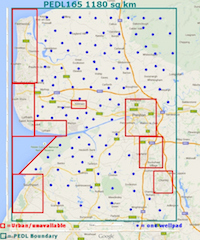“Fracking caused British Columbia earthquake”
B.C. Oil and Gas Commission reports that a 4.6-magnitude earthquake in northeastern British Columbia last week has been linked to the largest earthquake in the province that’s already been attributed to fracking – a 4.4-magnitude earthquake that was felt in Fort St. John and Fort Nelson in August 2014.
This is very significant as previous fracking related quakes have often been attributed to the injection of waste fluids into disposal wells and not to the act of hydraulic fracturing itself.
The risk from induced seismicity at this kind of level lies in the potential for well bore deformation more than in damage to local property. Well bore deformation could compromise the integrity of the well which could, in turn, lead to aquifer contamination.
The quakes in British Columbia would seem to a similar cause then to the tremors that happened at Preese Hall in 2011, although the larger tremor at Preese Hall had a magnitude of only 2.3 and this one was a 4.6. The Richter scale is logarithmic so an increase in magnitude of 2 represents a hundredfold increase in measured amplitude.
There are different regulations governing what happens when seismicity is noticed in Canada and the UK. In Canada they do not have to shut off the fracking until a magnitude of 4 is noticed. In the UK the new traffic light regulations mean that if a 0.5 magnitude tremor is induced then activity must stop. Of course we are still reliant on companies noticing the seismicity and abiding by the regulations, and what happened at Preese Hall does not instill complete confidence. At that time, it has been revealed after Freedom of Information requests were made, that Cuadrilla “failed to recognise the significance” of damage to the well and did not report it to government officials for six months, leading to a stern reprimand by the then energy minister, Charles Hendry.
It s equally concerning is the comment made by B.C.’s minister for natural gas development that 2.6 per cent of fracking operations in the Montney have been linked to a seismic event, and it is important to realise that the risk to well bore integrity is not just from fracking-induced seismic activity but from naturally occurring activity as well.
It was also reported that Professor David Eaton, a geophysics professor at the University of Calgary, who is researching maximum quake levels from fracking stated that “the science is years away from being able to map fault lines near fracking wells in a way that could predict how big a fracking quake could be“. That is a bit worrying given that Professor Mike Stephenson – Director of Science and Technology – British Geological Survey is on record as stating

Fylde Faults
“What you have to be able to do when you decide you want to hydraulic fracture is make sure there are no faults in the area. That’s really very very important” .
There is clearly valid cause for concern here for what might happen on the Fylde, which is a faulted area, if fracking is allowed to go ahead.

































